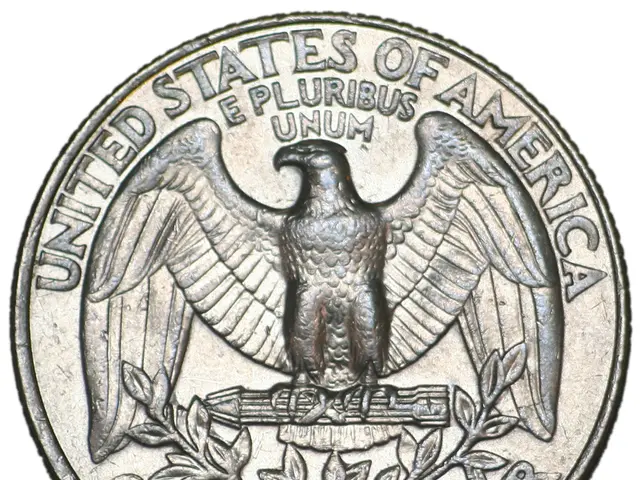Market plummets due to Trump's tariffs and disappointing job figures in the US
In a significant development, the US economy has been hit hard by the tariffs introduced by President Trump in Q2 2025. The impact has been negative and far-reaching, with a notable drag on US GDP growth, increased inflation, and sector-specific economic shifts.
The CAC 40 in France and the DAX in Germany both saw a decline of 2.9% and 2.7% respectively, closing at 7,546.16 and 23,425.97. Similarly, the S&P 500 in the US dipped by 1.4% to 6,250.54. The FTSE 100 in London, the Hang Seng Index in Hong Kong, and the Nikkei 225 in Japan also experienced losses, with decreases of 0.7%, 1.1%, and 0.7% respectively.
The tariffs reduced US real GDP growth by about 0.7 percentage points in 2025, and the economy is projected to be persistently 0.4% smaller in the long run, equating to roughly $110 billion annually in GDP loss. By Q2 2025, tariffs contributed to a rise in consumer prices—estimated at a 1.8% overall increase—with the highest price hikes in clothing and textiles (up to 35-37% in the short term) and food prices rising about 3.3%.
This inflationary pressure disproportionately affected lower-income households, who faced a larger relative decline in disposable income (around 3.4 percentage points or about $1,300 per household annually), while the richest 10% saw only about a 1% income loss.
Sectorally, manufacturing output saw a modest long-term increase of about 2%, but this was outweighed by declines in agriculture (down 0.8-0.9%), mining (down 1.3%), and especially construction (down 3.5%), indicating uneven economic impacts across industries. The labor market was also affected, with unemployment rising by about 0.4 percentage points and payroll employment declining by over half a million jobs by the end of 2025.
On fiscal terms, tariffs raised substantial government revenue—roughly $2.6 trillion projected from 2026–2035—but this was partially offset by negative economic growth effects costing $408 billion, yielding a net revenue gain of about $2.2 trillion over that period. However, much of this burden fell on American consumers and businesses facing higher prices on imports and tariffed inputs.
The US unemployment rate ticked up to 4.2% in July, below market expectations, and tariff uncertainty overshadowed earnings from major tech titans. Oil prices also plunged due to fears of a weakening US economy, with West Texas Intermediate down 2.6% at $67.45 per barrel and Brent North Sea Crude down 2.71% at $69.76.
Regarding global markets, although explicit details are less available in the Q2 2025 data, tariffs increased the US trade deficit by about 50% compared to the previous year, suggesting disrupted trade flows and potentially heightened global market tensions. Increased tariff rates on autos and auto parts (25% starting April 2025) are likely to have driven price increases for vehicles (potentially up to 11.4%) and influenced pricing strategies in the sector internationally, further pressuring global supply chains and market stability.
Economists have warned that high tariffs could fuel inflation in the US and harm its economy. The Euro/dollar is up at $1.1552 from $1.1421 on Thursday, the Pound/dollar is up at $1.3259 from $1.3208, and the Euro/pound is up at 87.13 pence from 86.43 pence. The dollar gave up earlier gains against key currencies, with the dollar/yen down at 148.07 yen from 150.68 yen.
In summary, by Q2 2025, Trump's tariffs had contributed to slower US economic growth, higher consumer prices, particularly hitting low-income households, sectoral output imbalances, and increased trade deficits, with knock-on effects on global markets, especially in affected industries like automotive manufacturing. Trump announced sweeping tariff levies on about 70 economies, and the impact of these tariffs continues to be felt across the globe.
Investors in Canada might be reconsidering their holdings in US stocks due to the ongoing tariff-related economic challenges in the United States. The potential for increased inflation caused by tariffs could necessitate a shift towards more stable investments in the Canadian stock-market.
Given the negative impact of tariffs on the US economy, particularly on manufacturing and construction sectors, foreign investors from the European Union might seek opportunities to invest in these sectors within the Canadian economy, which could potentially experience growth due to increased foreign capital.






